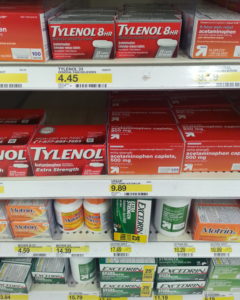
The Field of Pharmacology
The field of Pharmacology is centuries old and it is very complex with respect to the wealth and depth of information available. It is still evolving today. The goal of this post is not to address every detail of the field, but instead to give readers a basic introductory understanding of the discipline. Further details about the many aspects of Pharmacology can be accessed online, or in scientific journals.
I earned my Ph.D. in Pharmacology from the University of Michigan. I admittedly didn’t understand the field initially, although I did know that it dealt with drugs and hoped that a degree in it would one day secure a position for me in the Pharmaceutical industry. Since starting my studies in 1999, completing my degree in 2005, and starting my current career as a Regulatory Scientist, I’ve gotten the same question over and over again, “You have a background in Pharmacology? Are you a Pharmacist?” At Career and STEM Fairs, I get this question a lot, and thus following my principle of “Creating Ecosystems of Success“, I wanted to write a brief overview of the field – particularly for parents and young students who have an aptitude for science and may be interested in Pharmacology as a career one day.
Pharmacology and Pharmacy: What’s the Difference?
“Simply put, Pharmacy is the study of what drugs do to man, and Pharmacology is the study of what man does to drugs,” said one of the Cancer Pharmacology faculty in our Principles of Pharmacology course during my first year of graduate school. This statement explained in a very simple way some of the differences between the two disciplines. Pharmacy is the study of the actual drugs administered to patients as therapeutic agents and its practitioners work at various institutions including hospitals, medical centers, and drug stores – CVS for example. Pharmacists are health professionals, earn Doctor of Pharmacy degrees (Pharm Ds), are experts on medications, and are responsible for dispensing medicines. Pharmacology is a basic research science that studies the mechanisms underlying the therapeutic effects of pharmaceuticals and potential drug candidates with the goal of developing and testing of new drugs.
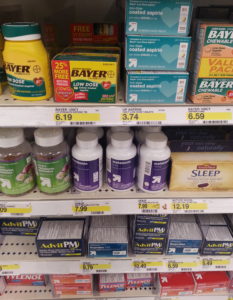
All medical practitioners (Anesthesiologists, Physicians, Pharmacists, Nurses, Surgeons, etc.) must take Pharmacology courses as they all need some understanding of the mechanisms of the drugs they ultimately prescribe. Pharmacologists are the actual researchers performing experiments trying to create new drugs and identify new drug targets. They further seek to characterize how mammalian systems (in most cases human although they are also involved in developing veterinary drugs) handle molecules at the molecular, cellular, tissue and whole organism levels. It’s a vast field with many areas of specialization that I’ll discuss in the remainder of this post.
Sub-Disciplines of Pharmacology
Pharmacology classically can be divided into two parts; Pharmacokinetics, which deals with how the drug is absorbed and eliminated by the body, and Pharmacodynamics, which deals with how the drug exerts its medicinal effect mechanistically. The following sub-disciplines within Pharmacology generally fall under one of these two umbrellas or, in most cases, are a mixture of the two. Each of us or someone we know has taken a drug or a treatment which has been impacted by one of these areas. Any pharmacologist reading this can easily further parse this list out into greater detail, but again this was written for a general audience:
- ADME/Drug Metabolism: Deals with how the body handles the therapeutic molecules in terms of absorption (entry to the body), tissue accumulation (distribution), biotransformation (metabolism) of the molecule, and excretion (elimination). Another focus of ADME/Drug Metabolism is “Drug Transport” which focuses on how drugs are absorbed and effluxed from cells using membrane channels and transporters impacting their effectiveness. I will revisit ADME/Drug Metabolism in greater detail in a separate post as me and some of my peers know it pretty well and find it to be a very exciting aspect of both Pharmacology and Toxicology.
- Antimicrobial Pharmacology: Involves the control of bacteria, fungi, and viruses to fight off or prevent infections.
- Autonomic Pharmacology: Deals with how the drug interacts with the Autonomic Nervous System (that part of the nervous system responsible for controlling bodily functions that are not consciously directed such as the heartbeat, breathing, and the digestive system) particularly through pathways involving epinephrine, norepinephrine, dopamine, and seratonin.
- Cancer Pharmacology: Deals with drugs used in the treatment of cancer – usually some form of chemotherapy.
- Cardiovascular Pharmacology: Deals with drugs used in treatment of heart disease and regulation of blood pressure. A well-known class is the “Statins” – cholesterol lowering drugs such as “Lipitor“.
- Endocrine and Receptor Pharmacology: Deals with how a given drug binds, interacts or even blockades a given cellular receptor, and then what the receptor does or doesn’t do to impact the homeostasis of that cell or tissue. The receptor can be membrane bound or cytosolic (many hormone receptors).
- Drug Discovery: Typically associated with the private sector and deals with the identification of new drug entities and the identification of new drug targets. In industry, pharmacologists generally refer to drugs as either “small molecules” which are our classic drugs like Aspirin (~180 g/mol), or “large molecules” (as heavy as 150,000 g/mol) also known as “biologics” which are generally proteins which have therapeutic effects. An example is Abbvie’s “Humira”. The units “g/mol” or grams per mole designate a chemical’s molecular weight and as you can see the size difference between the two classes is considerable.
- Neuropharmacology: Similar to Autonomic Pharmacology but deals with all of the other parts of the nervous system such as pain responses – analgesics and anesthetics for example.
- Pharmacogenomics: This new and exciting field looks at the genetics unique to individuals to determine the best treatments and dosages for that individual.
The Clinical and Research Sides of Pharmacology
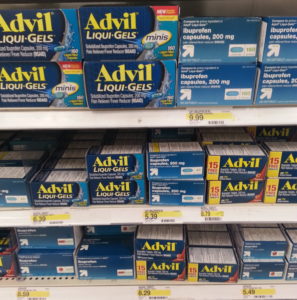
For each of these sub-disciplines there is a clinical side and a research side. The clinical side is self-explanatory – it involves treating patients for various diseases as well as the prevention of illness by the above mentioned medical practitioners. Think of the many medications you have been prescribed when you go to see medical doctors when you’re sick or for checkups, emergencies or surgeries. But where do these medications come from originally? Also, where will new medications come from in the future?
Academic and Industrial Research
This is where the research side come comes into play. At institutions like my alma mater, and in the private sector, there are scientists working year round on research projects asking questions about current medications in addition to trying to unlock the secrets of nature to create new therapeutics. The investigations they perform involve testing molecules using whole animal models, cellular models, and in vitro systems to ask questions at the molecular level (proteins, lipids, DNA and RNA) about what the compound does. It’s this research that can get very esoteric to the general public and that is published in academic journals including: Drug Metabolism and Disposition, the Journal of Pharmaceutical and Experimental Therapeutics, and Molecular Pharmacology.
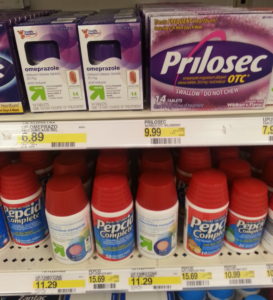
Pharmaceutical companies like Merck and Pfizer conduct research as well but instead of doing it strictly to find new knowledge, it’s to create new drugs that they can sell. The same is true for smaller Biotech companies like Biogen. Both need scientists with backgrounds in Pharmacology. The Federal Government also employs scientists with backgrounds in Pharmacology to determine the safety of new drugs before they can be prescribed to the general public. The same is true for food products and chemicals used in those products, so Pharmacologists are literally everywhere.
Careers in Pharmacology and Training
Depending on the degree level earned and where the scientist is employed, Pharmacologists can start earn starting salaries of $60,000-$70,000. Pharmacologists generally receive their training at major research universities. While undergraduates can get training in Pharmacology – nursing students for example, degrees in Pharmacology are usually conferred at the Masters and Ph.D. levels and support for the student’s educational expenses as well as a modest salary are provided. Upon attaining these degrees, scientists then determine which sector they want to pursue – academia, the private or public sectors, or nontraditional careers. With the skills obtained in graduate school, scientists with these backgrounds have the flexibility to combine their knowledge sets with other disciplines to go into a wide variety of areas in addition to drug discovery in pharmaceutical companies and biotechs including: consulting, Toxicology, patent law and even starting their own companies.
The Professional Societies for Pharmacology
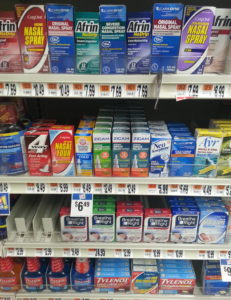
If you are interested in learning more about the exciting field of Pharmacology, I suggest that you visit the website of the American Society for Pharmacology and Experimental Therapeutics (ASPET). You can then click on the Education & Careers link near the top of the page. In the right hand column, there is a link titled About Pharmacology, that provides a great deal of interesting information. Speaking of ASPET, all scientific disciplines have their own professional societies with annual meetings that rotate cities every year, and where scientists congregate to show their results, and network. The two major professional societies for pharmacologists are ASPET, and the International Society for the Study of Xenobiotics (ISSX).
Thank you for taking the time to read this post, and I hope I was able to shed some light onto what Pharmacology is. If you enjoyed this post, you might also enjoy:
• A look at STEM: What is Toxicology?
• A look at STEM: What is ADME/Drug Metabolism?
• A look at STEM: What is Inhalation Toxicology?
• A look at STEM: Blockchain Technology, a new way of conducting business and record keeping
A special thank you is also extended to Dr. Paul Hollenberg, Chair of the Department of Pharmacology at The University of Michigan when I was a student, who graciously looked at this post and gave feedback prior my publishing it.
The Big Words LLC Newsletter
For the next phase of my writing journey, I’m starting a monthly newsletter for my writing and video content creation company, the Big Words LLC. In it, I plan to share inspirational words, pieces from this blog and my writers blog, and select videos from my four YouTube channels. Finally, I will share updates for my book project The Engineers: A Western New York Basketball Story. Your personal information and privacy will be protected. Click this link and register using the sign-up button at the bottom of the announcement. If there is some issue signing up using the link provided, you can also email me at bwllcnl@gmail.com . Best Regards.
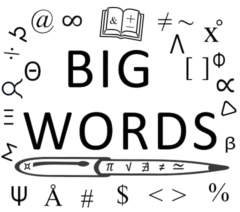
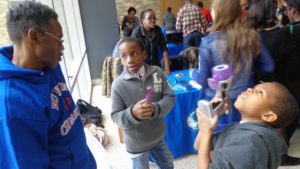 This is the continuation of my Black History Month interview with Dr. Vernon Morris of Howard University’s Department of Chemistry and
This is the continuation of my Black History Month interview with Dr. Vernon Morris of Howard University’s Department of Chemistry and 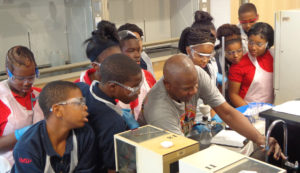 Vernon Morris: We started in 2009 and part of our motivation is that we were seeing fewer and fewer students from Washington, DC who were coming to chemistry, or even coming to
Vernon Morris: We started in 2009 and part of our motivation is that we were seeing fewer and fewer students from Washington, DC who were coming to chemistry, or even coming to 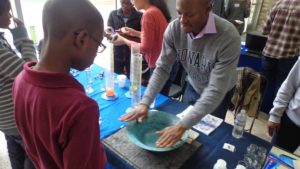 VM: Yes, the kids really enjoy it in addition to the
VM: Yes, the kids really enjoy it in addition to the 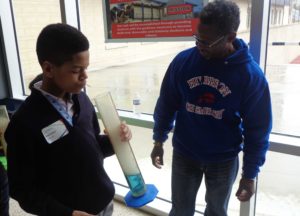 VM: I don’t think it’s cultural. I think it’s socioeconomic. I think you’d find a similar thing across all cultures if the economic stresses are great enough. If the economic stresses are lower, parents have more time to go to the family science fairs or
VM: I don’t think it’s cultural. I think it’s socioeconomic. I think you’d find a similar thing across all cultures if the economic stresses are great enough. If the economic stresses are lower, parents have more time to go to the family science fairs or 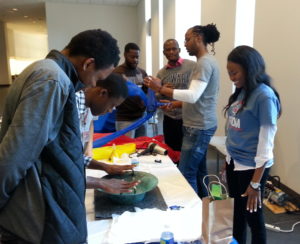 There is a separate body that governs what goes into the schools. The politics of the DC schools,
There is a separate body that governs what goes into the schools. The politics of the DC schools, 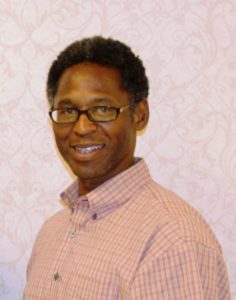 VM: I would say this about a science career in general, it’s a very rewarding career. I really enjoy what I do and I love coming to work every day. It’s part exploration, mentoring and teaching, and writing and being creative. It’s being quantitative and using both sides of your brain. And you can give back to the community and the nation in a very unique way. And I think there are so many opportunities in science. People think, “I don’t want to do chemistry and I don’t want to sit in a lab and mix chemicals”, but there’s a whole world of stuff outside of the lab that you can do. It’s the same thing for physics or mathematics, or biology. It’s an area that if you study it, the world is open to you.
VM: I would say this about a science career in general, it’s a very rewarding career. I really enjoy what I do and I love coming to work every day. It’s part exploration, mentoring and teaching, and writing and being creative. It’s being quantitative and using both sides of your brain. And you can give back to the community and the nation in a very unique way. And I think there are so many opportunities in science. People think, “I don’t want to do chemistry and I don’t want to sit in a lab and mix chemicals”, but there’s a whole world of stuff outside of the lab that you can do. It’s the same thing for physics or mathematics, or biology. It’s an area that if you study it, the world is open to you.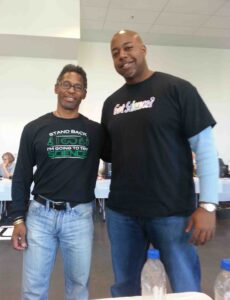 VM: Okay, that would great. We’d love to have you come out and help out Anwar.
VM: Okay, that would great. We’d love to have you come out and help out Anwar.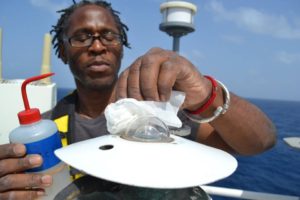 VM: No, I actually was not exposed at all. I never had the chance to do science fairs or any of that stuff. I think my first exposure to anyone who was in science was actually one of my mother’s friends, Carolyn Clay, who was an engineer from
VM: No, I actually was not exposed at all. I never had the chance to do science fairs or any of that stuff. I think my first exposure to anyone who was in science was actually one of my mother’s friends, Carolyn Clay, who was an engineer from 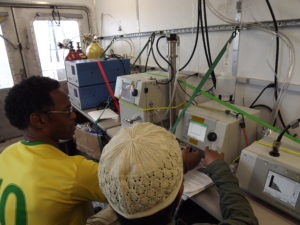 VM: From
VM: From 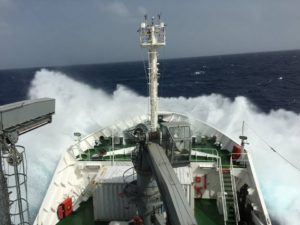 VM: We’re working on a lot of stuff, but the work revolves around trying to get a better quantitative understanding of how atmospheric particulates influence the chemistry of the atmosphere and climate across multiple scales. These are multiple spatio-temporal scales. There are time scales because the lifetime of aerosols tends to be days to months, but their influence in the atmosphere tends to range from that time scale to much longer time scales as clouds change their optical properties; that influences radiative balance and seasonal fluctuations. If you look at particle evolution, once an aerosol is formed and injected into the atmosphere from the ground layer, how does it influence and have these multiplying effects across larger spatial fields as it moves around the atmosphere, and through larger temporal scales as it effects something that has a multiple “follow on” effect?
VM: We’re working on a lot of stuff, but the work revolves around trying to get a better quantitative understanding of how atmospheric particulates influence the chemistry of the atmosphere and climate across multiple scales. These are multiple spatio-temporal scales. There are time scales because the lifetime of aerosols tends to be days to months, but their influence in the atmosphere tends to range from that time scale to much longer time scales as clouds change their optical properties; that influences radiative balance and seasonal fluctuations. If you look at particle evolution, once an aerosol is formed and injected into the atmosphere from the ground layer, how does it influence and have these multiplying effects across larger spatial fields as it moves around the atmosphere, and through larger temporal scales as it effects something that has a multiple “follow on” effect?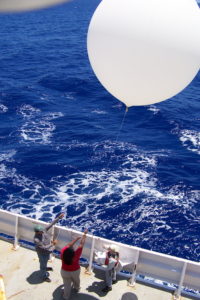 The ship experimental cruises allow us to look at the transport of aerosols that are transmitted from Africa either from the Sahara Desert or as a result of burning biomass from “Slash and Burn” agriculture. Particles get into the atmosphere and influence tropical cyclone development, and they influence acidification of the upper ocean. They also influence microbiological transfer, the transfer of microbes across hemispheres. They influence cloud properties and precipitation properties downstream and food security. So they have all of these implications that are much longer and much larger than a particular fire, or a particular dust storm. You have to connect that with field observations, laboratory studies and with space-based observations as well.
The ship experimental cruises allow us to look at the transport of aerosols that are transmitted from Africa either from the Sahara Desert or as a result of burning biomass from “Slash and Burn” agriculture. Particles get into the atmosphere and influence tropical cyclone development, and they influence acidification of the upper ocean. They also influence microbiological transfer, the transfer of microbes across hemispheres. They influence cloud properties and precipitation properties downstream and food security. So they have all of these implications that are much longer and much larger than a particular fire, or a particular dust storm. You have to connect that with field observations, laboratory studies and with space-based observations as well.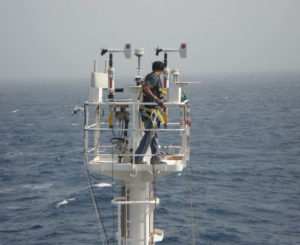 AD: You know, Vernon, as you were talking just now, I was just reflecting on how important it is to know these things. A couple of years ago a mentor who himself isn’t a scientist, but who saw that I was trying to develop my own writing and mentoring voice, gave me a copy of “
AD: You know, Vernon, as you were talking just now, I was just reflecting on how important it is to know these things. A couple of years ago a mentor who himself isn’t a scientist, but who saw that I was trying to develop my own writing and mentoring voice, gave me a copy of “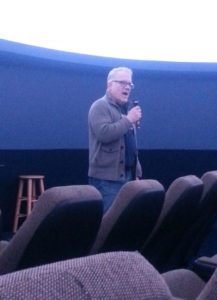 From Feb. 10-12, the
From Feb. 10-12, the 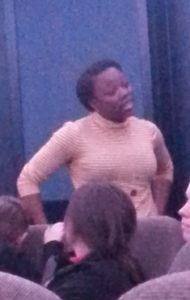
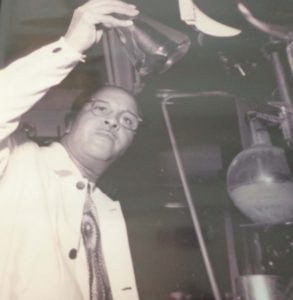
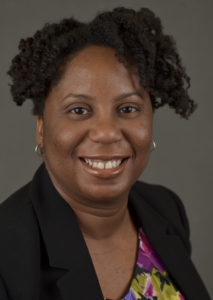 One of the goals of the Big Words Blog Site is advocacy of
One of the goals of the Big Words Blog Site is advocacy of 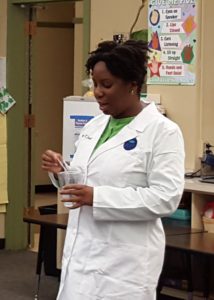 TS: Even though I grew up in a college educated family and most of the adults in the village that raised me were college educated, there were no STEM professionals in my network, other than my aunt who was a Microbiologist for the
TS: Even though I grew up in a college educated family and most of the adults in the village that raised me were college educated, there were no STEM professionals in my network, other than my aunt who was a Microbiologist for the 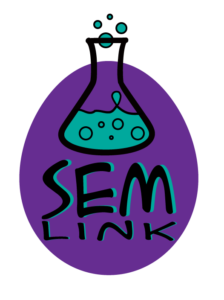 TS: Science, Engineering and Mathematics Link, Inc. (SEM Link) is a tax-exempt national nonprofit organization, which I founded in 2005 in Atlanta, GA, on the premise that exposure to members of the
TS: Science, Engineering and Mathematics Link, Inc. (SEM Link) is a tax-exempt national nonprofit organization, which I founded in 2005 in Atlanta, GA, on the premise that exposure to members of the 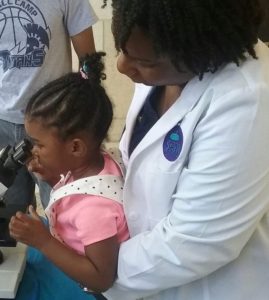 In 2005, I decided to create a nonprofit organization to expose more youth to
In 2005, I decided to create a nonprofit organization to expose more youth to 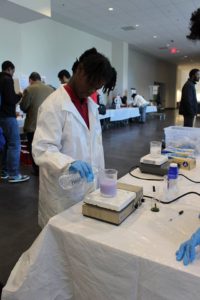 TS: Minorities, especially African Americans, come from cultures that have had scientists, engineers, mathematicians and inventors dating back to Ancient African civilizations. African Americans have continued throughout history and today to make an impact in the
TS: Minorities, especially African Americans, come from cultures that have had scientists, engineers, mathematicians and inventors dating back to Ancient African civilizations. African Americans have continued throughout history and today to make an impact in the 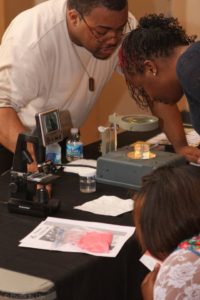 TS: I think the reason that kids are flocking towards techie stuff is because of the current trend to push teaching all kids to code. The reality is not all kids have the ability or are interested in coding and tech. However, coding and tech are easy to push because it is something that the general public can understand because, unlike other
TS: I think the reason that kids are flocking towards techie stuff is because of the current trend to push teaching all kids to code. The reality is not all kids have the ability or are interested in coding and tech. However, coding and tech are easy to push because it is something that the general public can understand because, unlike other  TS: My parting comment is the keys to getting kids interested in pursuing
TS: My parting comment is the keys to getting kids interested in pursuing 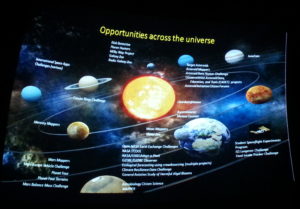 From the Jan. 27-29, the
From the Jan. 27-29, the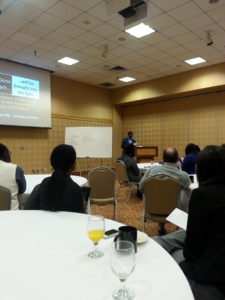 “Going forward, by 2050 we’re going to have to double food production to feed the population – a tremendous responsibility. The biggest threat in my mind to that grand challenge is contamination to our water and our soil from various chemicals and toxins,” said Dr. Patrick Halbur. “We need people focused on that area to prevent and solve that problem, and so there are tremendous opportunities in
“Going forward, by 2050 we’re going to have to double food production to feed the population – a tremendous responsibility. The biggest threat in my mind to that grand challenge is contamination to our water and our soil from various chemicals and toxins,” said Dr. Patrick Halbur. “We need people focused on that area to prevent and solve that problem, and so there are tremendous opportunities in 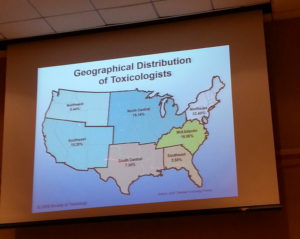 Just briefly, Toxicology is the science of characterizing the effects of poisons (toxicants) on living organisms. The
Just briefly, Toxicology is the science of characterizing the effects of poisons (toxicants) on living organisms. The 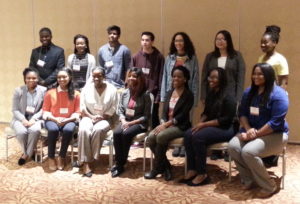 “
“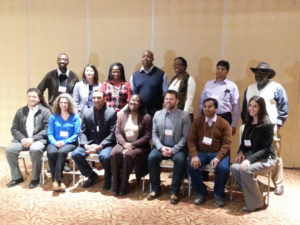
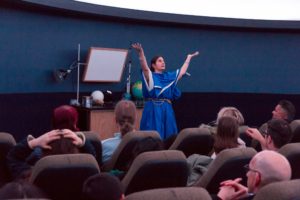 From the Dec. 9-11, the
From the Dec. 9-11, the 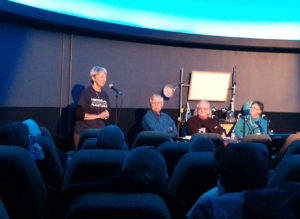 From November 18-20,
From November 18-20, 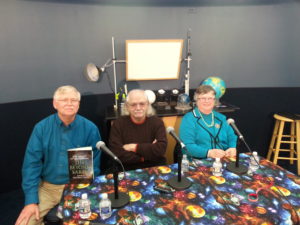 Some of the more well-known names often used in entertainment world’s references to science were also mentioned.
Some of the more well-known names often used in entertainment world’s references to science were also mentioned.